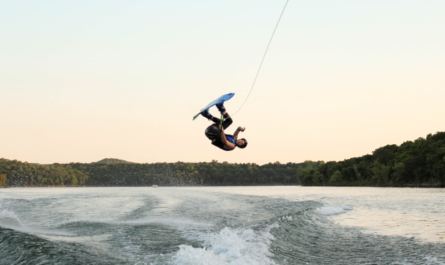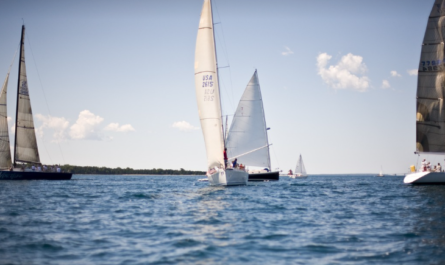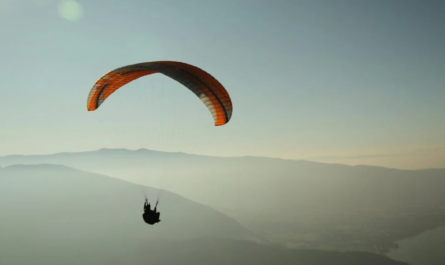High-altitude golfing offers an entirely different experience compared to traditional courses. The crisp alpine air, breathtaking vistas, and unique challenges presented by thinner air and variable weather conditions create an environment where even novice golfers can learn, adapt, and eventually thrive. This guide is designed to help beginners understand the nuances of playing golf in high-altitude locations, using Saint Moritz as an inspiring example. Whether you’re visiting for leisure or eager to take on a new adventure in your golfing journey, read on to discover what you need to know about golfing in such unique settings.
Understanding the High-Altitude Environment
How Altitude Affects Golf
When you step onto a high-altitude golf course, the first thing you notice is the difference in air density. At higher elevations, the air is thinner, meaning there is less resistance to the golf ball as it travels through the atmosphere. This phenomenon can affect your game in several ways:
- Increased Distance: With reduced air resistance, the ball tends to travel further than it would at sea level. For beginners, this can be both an advantage and a challenge. While you may achieve longer drives, the extra distance can lead to overshooting targets if you’re not accustomed to adjusting your swing.
- Altered Ball Flight: The ball’s trajectory may be higher due to the lower air density. This means you might need to modify your shot selection and club usage to account for a steeper descent.
- Variable Wind Conditions: High-altitude courses are often exposed to stronger and more unpredictable winds. A slight breeze can have a pronounced impact on your ball’s flight, making it crucial to observe and adjust to changing conditions.
Physical and Mental Considerations
Golfing at high altitude isn’t just a technical challenge—it also demands physical and mental adaptation:
- Acclimatization: When you’re not used to high altitudes, you may experience symptoms like shortness of breath, fatigue, and even slight headaches. Arriving a day or two early to let your body adjust can improve your performance and overall comfort.
- Increased Energy Expenditure: The body works harder at higher elevations, so you might find yourself tiring faster. Hydration and proper nutrition become even more critical in these conditions.
- Mindset and Focus: The unique conditions require you to be more mindful and present during each shot. Embracing the challenge and maintaining a positive, focused mindset can help you adapt and even enjoy the experience.
Preparing for Your High-Altitude Golfing Experience
Research and Planning
Before heading to a high-altitude destination like Saint Moritz, take time to research the course, the local climate, and the facilities available. Understanding the layout and conditions will allow you to plan your strategy better. Here are some steps to consider:
- Course Research: Look up course maps and reviews. High-altitude courses may have fewer hazards like water bodies, but they could include other unique challenges like narrow fairways and strategically placed bunkers.
- Weather Forecast: Check local weather conditions. Temperature fluctuations can be significant in mountainous areas, so pack clothing that allows you to layer up or down as needed.
- Local Tips: Seek advice from experienced golfers or local instructors. Many resorts and golf clubs offer beginner clinics specifically designed for high-altitude play.
Physical Preparation
Getting your body ready for high-altitude golfing can significantly impact your performance:
- Cardiovascular Conditioning: Activities like brisk walking, jogging, or cycling can help build endurance. A stronger cardiovascular system can make the physical demands of high-altitude play more manageable.
- Flexibility and Strength Training: Incorporate stretching and strength exercises into your routine. Golf requires a combination of flexibility for a full swing and strength for consistent ball striking.
- Hydration and Nutrition: Start hydrating well before your trip. At high altitudes, you lose moisture more quickly, so carry water with you on the course. Eating a balanced diet rich in carbohydrates and proteins can help maintain energy levels throughout your day.
Gear and Equipment Adjustments
The change in altitude may also necessitate some adjustments to your usual golfing equipment:
- Club Selection: Since the ball travels further at high altitudes, you might want to adjust your club selection. For instance, you might use one less club for the same distance compared to what you’d use at sea level.
- Golf Balls: Consider experimenting with different types of golf balls. Some balls are designed to perform better in high-altitude conditions by maintaining a stable flight.
- Appropriate Clothing: Invest in high-performance, moisture-wicking apparel and layers. In cooler conditions, thermal wear, windbreakers, and waterproof jackets can be crucial. Don’t forget golf-specific accessories like gloves and hats that provide both comfort and protection.
On the Course: Adapting Your Game
Adjusting Your Swing and Shot Strategy
High-altitude conditions can alter your typical swing dynamics. Here are a few tips to help you adapt:
- Control Your Swing Speed: While you might be tempted to swing harder due to the ball traveling further, it’s important to control your swing speed to maintain accuracy.
- Focus on Accuracy: With the potential for longer shots, precision becomes more critical. Practice your short game and putting, as these aspects of the game can help compensate for any unpredictability in ball flight.
- Monitor the Wind: High-altitude courses are often more exposed. Regularly check wind direction and speed, and adjust your shots accordingly. Sometimes a slight change in stance or club choice can make a significant difference.
- Practice at Altitude: If possible, visit a high-altitude driving range or practice facility before your tournament or round. Familiarizing yourself with how your clubs perform in these conditions can boost your confidence on the course.
Embracing the Mental Game
Golf is as much a mental game as it is physical. In high-altitude settings, staying mentally sharp is key:
- Visualization: Take time before your round to visualize successful shots. Mentally rehearsing your swing in the unique conditions of the course can help reduce anxiety and increase focus.
- Stay Present: Focus on one shot at a time. The altered conditions might make you overthink your strategy, so staying present and trusting your preparation is crucial.
- Positive Self-Talk: Use affirmations and positive self-talk to maintain confidence. Remind yourself that you are well-prepared and capable of adapting to these new challenges.
- Mindfulness Practices: Consider incorporating short mindfulness or breathing exercises during your round. These practices can help you remain calm and centered, even if the conditions become challenging.
Exploring Saint Moritz: Beyond the Golf Course
While golfing is the main attraction for many visiting Saint Moritz, the destination offers a plethora of additional experiences that can enrich your trip:
Luxury and Leisure
Saint Moritz is synonymous with luxury. Many visitors take the opportunity to indulge in high-end experiences that complement their sporting pursuits.
- Spa Retreats: After an intense round of golf, relaxing in one of Saint Moritz’s luxurious spas can rejuvenate your body and mind. Many resorts offer exclusive spa packages that combine wellness treatments with the serene alpine setting.
- Gourmet Dining: The region boasts world-class dining experiences where local cuisine meets international culinary artistry. Savoring a meal made with fresh, local ingredients can be a highlight of your visit.
- Boutique Shopping: Stroll through the town’s upscale boutiques and artisan shops, where you can pick up unique souvenirs and luxury goods that reflect the local culture and craftsmanship.
Cultural Experiences
Saint Moritz is rich in history and culture. Engage with the local heritage to gain a deeper understanding of the region:
- Local Festivals and Events: Depending on the time of year, you may have the opportunity to experience local festivals, art exhibitions, and cultural events that celebrate the traditions of the Engadine region.
- Scenic Excursions: Take a break from the golf course and explore the stunning natural surroundings. Whether it’s a leisurely walk around Lake Saint Moritz, a guided hike in the nearby mountains, or a scenic drive through the alpine valleys, the natural beauty of the region is sure to leave you awe-inspired.
- Historical Landmarks: Visit local museums and historical sites that showcase the heritage of Saint Moritz. Learning about the history and evolution of the area can add depth to your overall experience.
Practical Considerations for Your Trip
Budgeting and Booking
Planning a trip to a high-altitude destination like Saint Moritz requires careful budgeting and advance booking:
- Accommodation: Saint Moritz offers a range of luxury accommodations. From iconic hotels like Badrutt’s Palace and the Kulm Hotel to boutique lodgings, it’s essential to book early to secure the best rates and locations.
- Travel Costs: Factor in travel expenses, including flights, transfers, and local transportation. High-altitude destinations often command a premium, so planning ahead can help you manage costs.
- Package Deals: Look for bundled packages that include accommodations, spa treatments, and even golf access. Many luxury travel agencies offer curated experiences that provide value for money while ensuring a seamless experience.
Health and Safety Tips
When traveling to high-altitude locations, your health and safety should be a top priority:
- Acclimatization: Allow time for your body to adjust to the altitude. Arriving a day or two early can help you acclimate and avoid altitude sickness.
- Hydration and Nutrition: Stay well-hydrated and maintain a balanced diet. High-altitude conditions can dehydrate you faster, so carrying a reusable water bottle and snacking on nutritious foods is advisable.
- Emergency Preparedness: Familiarize yourself with local emergency services and carry any necessary medications. Travel insurance that covers high-altitude health issues is also recommended.
Packing Essentials
Make a checklist of items tailored for high-altitude adventures and golfing:
- Appropriate Clothing: Layering is crucial. Pack thermal wear, a high-quality winter jacket, gloves, hats, and comfortable golf attire.
- Golf Equipment: Ensure your clubs and balls are suited for high-altitude conditions. Consider consulting with your local pro shop for adjustments.
- Technology: Bring a camera or smartphone to capture the stunning vistas and memorable moments. Portable chargers and backup batteries are essential.
- Personal Care Items: Don’t forget sunscreen, lip balm with SPF, and any personal medications. The reflection of the sun off the snow can be intense, so protection is key.
Testimonials: Voices from the High-Altitude Golf Community
Hearing from those who have experienced high-altitude golfing can provide valuable insights. Many seasoned golfers emphasize the importance of adapting to the conditions and taking the time to enjoy the unique environment.
One avid golfer from a recent Saint Moritz trip noted, “Playing at high altitude was a revelation. The ball travels further, and you quickly learn to adjust your swing. It’s not just about power—it’s about precision and being in tune with nature.” Another beginner remarked, “I was initially overwhelmed by the conditions, but the beauty of the surroundings and the supportive community made it an unforgettable experience.”
These testimonials underscore that while high-altitude golfing presents challenges, it also offers unparalleled rewards—both in terms of personal growth and the sheer joy of the game.
Final Thoughts: Embrace the Unique Challenge
Golfing in high-altitude locations like Saint Moritz is more than just a sport; it’s an adventure that challenges you to adapt, learn, and grow. The combination of physical, technical, and mental adjustments required in such settings transforms each round of golf into a comprehensive exercise in resilience and self-improvement.
For beginners, the key to success lies in preparation—both on and off the course. Understand the scientific principles behind altitude effects, invest time in acclimatization, and be open to learning new techniques. Embrace the journey as an opportunity to step outside your comfort zone and discover a new facet of your potential.
By planning meticulously, staying adaptable, and taking in the awe-inspiring beauty of Saint Moritz, you can turn the challenge of high-altitude golfing into one of the most rewarding experiences of your life. Whether you’re playing on a pristine alpine course, exploring the local culture, or simply soaking in the mountain air, every moment is an opportunity to connect with nature and rediscover the joy of movement.
So, if you’re ready to elevate your golf game—both literally and figuratively—consider a trip to Saint Moritz. With its blend of luxury, adventure, and natural beauty, this iconic destination offers not just a game of golf, but an unforgettable journey that will inspire you long after you leave the course.



